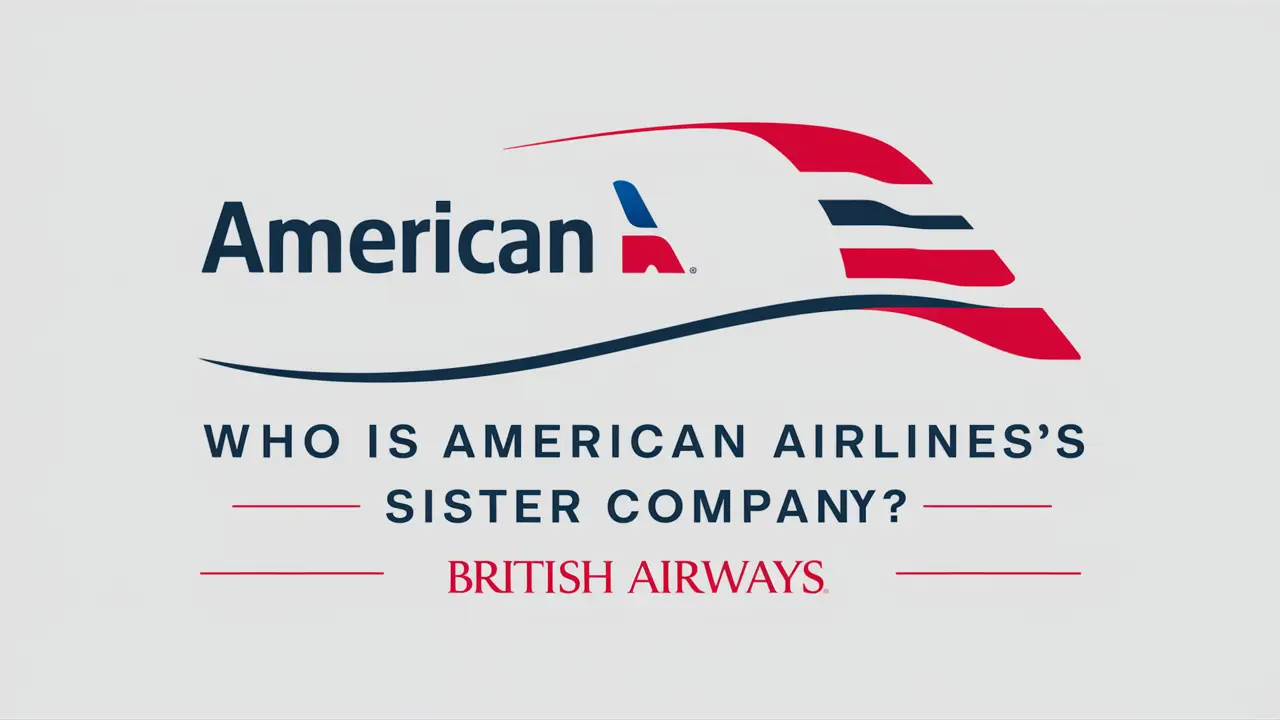Who is American Airlines's sister company?

A brief look at the descendants of the American Airlines family.
American Airlines is one of the biggest airlines in the world; the airline operates more than 6,700 flights a day and makes available over 200 million passengers per year, covering over 350 destinations across more than 50 countries. Yet, America does not exist independently; it’s part of a large corporate family with many mergers, acquisitions, subsidiaries, and partnerships in its nearly century-long history. Well, exactly who comprises the vast American Airlines family or, more specifically, its ‘closely related’ corporate family?
The Politico-Economic Reality that Gave Birth to the ‘American’ in American Airlines
American Airlines is one of the oldest existing airlines in the United States today; it began its operations in 1930 with the establishment of several small airlines during the infancy of commercial flight. Most of those small airlines later on fused, integrated, or were assimilated during the subsequent decades. One of the major mergers was in 2013 when American Airlines merged with US Airways. But history does not begin and end with the two parties.
In the 1930s, American Airways was created from over eighty small companies or portion providers. During that decade, more other carriers, such as Eastern Air Lines, Trans World Airlines, and Western Airlines, were established. After the Second World War, American Airways altered its business name to become known as American Airlines, as it became one of the United States’ key four airlines. In the subsequent decades, other airlines, including Allegheny, Lake Central, Mohawk, Ozark, Piedmont, Reno Air, Trump Shuttle, Trans Caribbean, and US Airways, were also incorporated into the American Airlines fold either by acquisitions or mergers.
This long consolidation is the journey that led to the present-day American Airlines Group. Today, its main airports are those that embody the merged experience, such as Charlotte, Chicago, Dallas-Fort Worth, Los Angeles, Miami, New York, Philadelphia, Phoenix, and Washington, DC Its group also maintains connections hubs, regional flight partners and affiliated companies that makeup part of the family tree.
American Airlines Group Today
Today's American Airlines Group business is organized into several segments:
- Mainline Passenger Airlines: These include the current American Airlines and the legacy US Airways that operate flights that provide transport for over 200 million passengers every year.
- Regional Carriers: American Airlines has a strategic association with nine other independent regional carriers, such as Envoy Air, Piedmont Airlines, and PSA Airlines. These run shorter distances and also use smaller aircraft under the American Eagle moniker.
- Cargo Transport: AA Cargo is American Airlines Cargo’s freight and mail services, which are offered on American planes and selected codeshare flights.
As such, although the main business is based on the popular passenger airline of The American, it does have other related businesses that address other transport sectors.
Some of the key strategies used in the current multilateral trading system include joint business ventures and strategic partnerships.
American Airlines has also formed key codeshares and strategic cooperation to enhance the market shares available for it and its joint ventures.
Some of their key global joint business ventures include:
- Joint Business with British Airways, Iberia, and Finnair in the Atlantic
- The partnership between Pacific Joint, Japan Airlines and Qantas
- These ventures also establish integrated scheduling, pricing, and sales into the partnerships to enhance operations and provide more options to customers regarding the booking of international itineraries.
Additionally, America has domestic strategic partnerships with carriers like:
- The current legacy carriers include JetBlue, Alaska Airlines, and Hawaiian Airlines.
- Such arrangements involve the establishment of cooperation in various areas, such as frequent flyer programs, passengers’ network connections, and the codeshare agreement of some flight routes.
- They are not full mergers or acquisitions, but they are formal contractual affiliations, which show a commitment between the two airlines and there is a linking of the brands for the customer.
For American Airlines, the future of their family tree remains uncertain.
In the future, as American Airlines maintains a strategic outlook, it may also maintain existing partnership relations. Still, there is continuous consolidation in the airline industry that America may be able to influence.
Mergers or acquisitions that are not so obvious today may be seen tomorrow more clearly. Speculations have been made regarding American Airlines’s major US airlines, such as Frontier, Spirit, and Alaska. Buyouts of stakes in other carriers for international expansion, such as investing in India’s Vistara or China Southern, also could be strategies.
Regardless of what may happen in the consolidation of M&As in the future, American Airlines can rightfully claim its place amongst the global air travel leaders. Several airlines that have come together over the years, driven by the history of a large number of airlines, have made the American airline what it is today, one of the largest international airlines. Thus, although the airline is identifiable and recognized by the logo and paint scheme, it encompasses the fabric of many colorful aviation enterprises that have become the past, present, and future of the organization.
Book your American Airlines ticket now and experience comfort and reliability. Call +1 833-902-2090 to speak with our travel experts.
